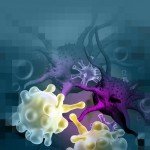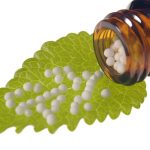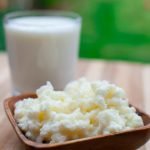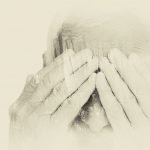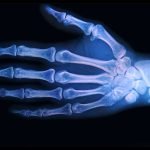Commonly Presenting Illnesses in the Elderly
Immobility and Disease
Thomas A. Kruzel, ND
As the population ages, the demand for medical services will increase as the elderly population in general experiences greater morbidity associated with the aging process. Consider that with the recent economic crises and the efforts by legislators to curb spending and reduce the deficit, programs like Medicare may be reduced, placing a greater burden of care on alternative providers. In addition, allopathic medicine has largely become a managed care system, which means that disease conditions are managed, usually by adding more prescription medications, with little emphasis on prevention. Therefore, it becomes all the more important that NDs should be aware of the areas of morbidity in the elderly population because the demand for naturopathic services will only increase in a population that already has a high utilization of natural therapies.
Immobility in this population can have serious consequences. An elderly person who is largely immobile or remains bedridden is at higher risk for the following conditions.
Contractures
Contractures are caused by prolonged immobility in a bedridden patient but are sometimes due to tightness of bedsheets. They can occur in a matter of 2 to 3 days if the joints are not mobilized daily. With immobilization, fibrosis and tendon contracture will occur, which in the elderly is difficult to treat because of slower healing times. Contractures may lead to decubitus ulcers.
Pressure Sores
Pressure sores are due to prolonged bed rest, especially if there is some type of sensory loss, as in diabetes mellitus. Obesity, anemia, poor nutrition, low blood pressure, poor peripheral vascular flow, skin infections, and fecal contamination are factors leading to bedsore formation. Muscle and fat layers are more vulnerable than dermis, so sores may be larger than they seem. Low pressure for prolonged periods is worse than high pressure for a short time, and there is a direct correlation between size and prognosis. Areas of higher incidence are the heels, greater trochanters, spine, sacrum, scapular spines, and elbows. Vulnerable areas should be kept clean and dry. Fluid loss through ulcers can be considerable, and replacement is often necessary. Consider higher protein, vitamin, and mineral intakes, especially zinc and vitamin A, to help with healing. Special beds or nursing care may be necessary.
Thromboembolism
Thromboembolism is also of concern in immobile patients because spontaneous thrombosis may occur even in the absence of neoplasm, after surgery or obstruction. A high degree of suspicion for embolus is present if unilateral leg swelling occurs, but bilateral leg swelling is not unheard of. Some patients with thromboembolism may have no swelling or calf tenderness. Patients with paralysis need to have regular physical therapy, and frequent leg and arm inspection is necessary with anyone on prolonged bed rest. It is best to get the person up and walking, do leg exercises, and perform deep breathing when possible. Consider some form of prophylactic herbal anticoagulant therapy.
Dehydration
Dehydration can occur because of prolonged immobility. Common causes of low fluid intake are fear of incontinence, inadequate or difficult-to-utilize bathroom facilities, fear of falling, or loss of drinking habit. Clinically, you will see a dry brown tongue, sunken cheeks, inelastic skin, elevated blood urea nitrogen level, and often electrolyte imbalance. Overuse of diuretics, coffee, or alcohol or the presence of diabetes may cause this condition, as can diarrhea or vomiting. Lassitude, weakness, and prostration should suggest potassium depletion (<3.5 mEq/L), which can occur because of dehydration.
Constipation
Constipation from prolonged bowel inactivity may lead to irritation, with subsequent passage of large amounts of mucus. Bowel obstruction should be considered. An impacted bowel may cause an elderly person to become mentally confused or disoriented, which will abate after passage of stool. Bowel problems can be avoided by increasing fluid and fiber intake. Fruits and greens are often found to be lacking in the geriatric diet, especially in rest homes.
Incontinence
Incontinence is one of the leading causes of admissions to rest homes. During illness, the incidence increases, much to the embarrassment of the elderly patient, but returns to normal afterward. Prolonged bed rest also predisposes to incontinence, especially at night. The person may also be totally unaware of the problem he or she has with incontinence because of their mental status.
Some causes of fecal incontinence are proctitis, cancer of the rectum, prior rectal surgery, anal prolapse, and lesions of the spinal cord or cortical region. Most often, it is due to chronic constipation, which causes diarrhea or looser stools because of irritation. Rectal examination often provides information about fecal impaction and helps to clear the problem, while several days of enemas or colon hydrotherapy may be needed to get things flowing again.
Loss of Independence
For most elderly patients, maintaining their independence as long as possible is a must. For some, it is very easy to give it up and become dependent on others. For therapeutic and mental health reasons, it is probably best to allow older patients to do as much as possible by themselves. This may require great patience on the part of the family, but it is best for the elderly.
Hypothermia
A body temperature of 35°C or less is considered hypothermic. Hypothermia can be seen at the onset of diseases like pneumonia, pulmonary embolism, cardiac infarction, and stroke. Often, it is due to sleeping in cold bedrooms or falling on ice or on the floor and not being able to get up. Complications are pneumonia, pancreatitis, organ infarct, and gangrene of the extremities. Death may be sudden and unexplained, even if the patient initially seems to be responding. Hypothermia may present as clouded consciousness, slurred speech, no shivering, puffy face, slow pulse, muscle rigidity, and very cold skin, especially of the abdomen. The skin may not appear ice blue but rather pink. Rapidly rewarming a hypothermic patient is contraindicated because cardiovascular collapse may occur. Rewarm at no more than 0.5°C per hour, along with other support measures, such as oxygen therapy and so forth. The best treatment is prevention.
Hyperthermia
Direct sun exposure need not occur for a person to become hyperthermic. Environmental temperatures above 38°C for several days may cause symptoms like apathy, weakness, faintness, and headache. Signs of hyperthermia include body temperatures of 39.5°C or higher, tachycardia, and dryness of the skin. Electrolyte abnormalities may or may not be present, and perspiration is reduced due to less active sweat glands. Treatment with ice water sponging, fans, and alcohol sponge baths to rapidly reduce the body temperature is desirable. Some intravenous therapy may be needed but is not always necessary because fluid loss may not have occurred. As with hypothermia, any medical condition the patient has (eg, diabetes) may be worsened by hyperthermia and in fact may precipitate an exacerbation.
Often, elderly patients who are seen in the office or in inpatient settings will present with few symptoms. More often than not, they will end up in your office because a caregiver or loved one will have noticed that there is a change in their personality or normal activities of daily living. Such observation is important because it may be the only sign of an underlying disease process.
Headaches
Periodic or frequent headaches should alert the clinician to the possibility of a space-occupying lesion. This is due to the fact that the elderly generally present with fewer headaches. Temporal headache or facial pain should suggest arteritis and needs to be worked up. Headache due to dehydration is almost never seen as often as it would be in a younger patient.
Sleep Disorders or Insomnia
It is somewhat of a myth that elderly people generally require less sleep than younger individuals. Often, an older person will take periodic naps to compensate. If he or she is sleeping more, it may be because of boredom or depression. Sedative use needs to be evaluated, as well as the presence of uremia, heart failure, or respiratory insufficiency. Insomnia may also be due to depression or some type of mental upset. An elderly patient may need to urinate more often at night either through habit, bladder disease, or the consumption of alcoholic drinks to induce sleep.
Dysphagia
Dysphagia is often seen and may be due to neurological dysfunction more often than physical obstruction. Conditions that need to be considered are cancer of the esophagus or larynx, Plummer-Vinson syndrome, diverticulas, and hiatal hernia.
Anorexia
Appetites are variable in this age group, and it is important to consider how a person ate in the past when trying to assess his or her eating pattern now. Appetite is probably the last thing to recover after an illness, but anorexia may be the first sign of gastric cancer or other underlying illness. Anorexia nervosa is not found in the elderly, but some patients may decide not to eat because they do not wish to live. It may also be a sign of depression.
Dyspnea
With age, the lung vital capacity decreases, as does the ability of oxygen to diffuse, whereas the residual volume increases. A certain amount of dyspnea may be present, with an elderly person restricting his or her normal activities of daily living to compensate. It is also present in patients with obesity or anemia. With respiratory disease, the respiratory rate will increase and is often the first sign before the pulse and body temperature increase. Dyspnea occurs with heart failure, and it is important to ask how many pillows the patient sleeps on or if there is coughing at night. Persistent deep panting respirations in someone who looks sick suggest acidosis. Attacks of breathlessness may be Cheyne-Stokes respiration, which is somewhat common, or may represent an acid-base imbalance.
Vertigo
Vertigo is a common complaint with or without a disease process. Causes are anemia, acute gastrointestinal bleeding, carotid sinus syndrome, postural hypotension, hypertension, cardiac rhythm changes, myocardial infarction, minor cerebrovascular accidents, wax in the ear, middle ear disease, acoustic neuromas, acute labyrinthitis, sinus congestion, and Ménière’s disease. Effects from the use of drugs like salicylates, quinidine, β-blockers, barbiturates, diuretics, and antihypertensives should also be considered.
Syncope
Syncope often presents as an attack and causes much anxiety and alarm, which may make it difficult to get a history. Concern may arise from the family or spouse as to whether the patient is capable of living independently or needs to be in an assisted-living environment. Etiology can be from minor epileptic fits, stroke, cardiac event or localized cerebral ischemia, or plaques. Carotid sinus syndrome can be reproduced by having the person do exactly what caused the attack (often neck hyperextension) to see if it occurs again. So-called drop attacks, where the patient suddenly falls and cannot get up because of muscle flaccidity, may last from minutes to hours. The cause is often unknown and needs a complete workup. Finally, the patient may present with hysteria, especially if he or she is feeling neglected or unloved or is facing a move to a different location. This is often a difficult situation to deal with but needs to be addressed and may require the assistance of a social service agency.
Hypotension
Patients with hypotension may complain of dizziness, limpness, or fainting on standing up. Some will have trouble sitting because they feel ill or perhaps giddy. Usually, this is a sign of a severe circulatory disturbance or acute gastrointestinal hemorrhage, or a cardiopulmonary event may need to be considered. Myocardial infarction rarely takes the classic form in the elderly, and low blood pressure may be its first and only sign. A pulmonary infarct, especially if there is a history of being bedridden, may manifest in the same way. Elderly people taking hypertensive drugs are very susceptible to their effects, while hypokalemia may cause low blood pressure. In addition, postural hypotension has been shown to be common in patients with low serum sodium levels.
Blindness or Poor Vision
Gradually decreasing sight may not be as common as is generally thought and should not be automatically assumed. However, it may be the cause of decreasing mobility, poor orientation, or bizarre visual impressions. Cataract formation may manifest as the sensation of direct light, causing a glare, with the person compensating by sitting with the back to a window or wearing dark glasses when reading. Sudden onset of blindness may represent retinal detachment, hemorrhage, retinal vein thrombosis, giant cell arteritis, or an occipital lesion or may be due to stroke. Often, the elderly person will be in a state of denial until it is too late to learn Braille.
Deafness
Deafness and hearing loss are common in the elderly, while impaired hearing is not. Usually, the loss is in the higher tone range, but it is not uncommon for an elderly person to hear female voices better than male voices. Being unable to hear, an elderly person will usually withdraw and become less social. If totally deaf, he or she may respond to questions with a blank stare or smile and may be considered mentally deficient until the question is written out. Selective hearing is not uncommon and often results from the person’s interest level.
Fatigue
Along with inactivity and a negative outlook, fatigue may result from depression or boredom. It may also be due to wasting illnesses, anemia, heart disease (especially left ventricular failure), hypokalemia, and cachexia. If a patient is taking too many prescription medications, the onset of fatigue may often occur following a medication change or addition. Although it is common for vitality levels to drop off somewhat with age, if an elderly person is expected by family members or physicians to be fatigued, he or she generally will be. Following an illness, energy levels will return to normal but may be somewhat lower.
Our Primary Precept
Prevention of disease and morbidity, a primary precept of naturopathic medicine, is key in the aging population because diseases often do not present with easily recognizable symptoms and the course of the illness can progress rapidly. Awareness of risk factors and early recognition of them will allow the physician to be proactive to help relieve the individual and economic burden in this population.
 Thomas A. Kruzel, ND is a naturopathic physician who is in private practice at the Rockwood Natural Medicine Clinic in Scottsdale, Arizona. He received a BA in Biology from the California State University at Northridge, and his Doctorate of Naturopathic Medicine degree from the National College of Naturopathic Medicine. Dr. Kruzel is also a board certified Medical Technologist. He completed 2 years of Family Practice Medicine residency at the Portland Naturopathic Clinic where he was chief resident prior to entering private practice. He also completed a fellowship in Geriatric Medicine through the Oregon Geriatric Education Center and the Portland VA hospital. Dr. Kruzel has been an Associate Professor of Medicine at National College of Naturopathic Medicine where he has taught Clinical Laboratory Medicine, Geriatric Medicine, and Clinical Urology. He is the author of the Homeopathic Emergency Guide, A Quick Reference Handbook to Effective Homeopathic Care, published by North Atlantic Books and has published numerous articles in The Journal of Naturopathic Medicine as well as other publications. He is also the past president of the American Association of Naturopathic Physicians and was selected as Physician of the Year by the AANP in 2000 and Physician of the Year by the Arizona Naturopathic Medical Association in 2003.
Thomas A. Kruzel, ND is a naturopathic physician who is in private practice at the Rockwood Natural Medicine Clinic in Scottsdale, Arizona. He received a BA in Biology from the California State University at Northridge, and his Doctorate of Naturopathic Medicine degree from the National College of Naturopathic Medicine. Dr. Kruzel is also a board certified Medical Technologist. He completed 2 years of Family Practice Medicine residency at the Portland Naturopathic Clinic where he was chief resident prior to entering private practice. He also completed a fellowship in Geriatric Medicine through the Oregon Geriatric Education Center and the Portland VA hospital. Dr. Kruzel has been an Associate Professor of Medicine at National College of Naturopathic Medicine where he has taught Clinical Laboratory Medicine, Geriatric Medicine, and Clinical Urology. He is the author of the Homeopathic Emergency Guide, A Quick Reference Handbook to Effective Homeopathic Care, published by North Atlantic Books and has published numerous articles in The Journal of Naturopathic Medicine as well as other publications. He is also the past president of the American Association of Naturopathic Physicians and was selected as Physician of the Year by the AANP in 2000 and Physician of the Year by the Arizona Naturopathic Medical Association in 2003.






